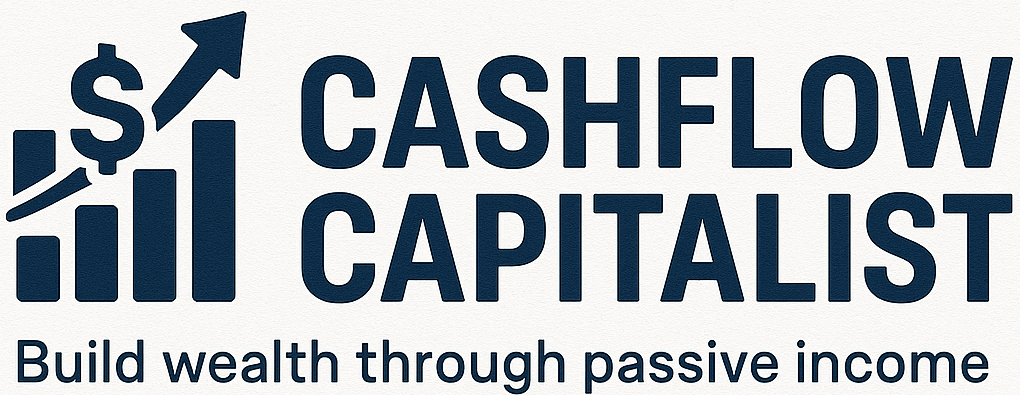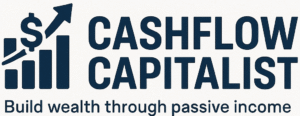The FIRE Movement Explained: How to Achieve Financial Independence and Retire Early in 2025
Imagine having the freedom to do what you love without a 9-to-5 job. The FIRE movement is making this dream come true for thousands in Canada. It’s not just about saving money; it’s a way of life focused on financial independence and early retirement.

To achieve financial freedom, you need to save aggressively, cut down on unnecessary spending, and invest wisely. This path requires discipline and the right mindset. But the reward is huge: the freedom to live life on your own terms.
Key Takeaways
- Understand the core principles of the FIRE movement.
- Learn how to apply aggressive saving strategies.
- Discover ways to reduce expenses and invest smartly.
- Calculate your financial independence number.
- Start your journey to retiring early in Canada.
The FIRE Movement: Origins and Core Philosophy
The FIRE movement is becoming more popular around the world. It focuses on saving a lot of money and investing it wisely. It’s not just about saving; it’s a way of life that makes you think differently about money and work.
The History and Evolution of Financial Independence
The FIRE movement started with the 1992 book “Your Money or Your Life” by Vicki Robin and Joe Dominguez. This book changed how people see spending and saving. It made them think about how many hours of work each expense represents.
Over time, the movement has grown. It now includes lean FIRE and fat FIRE strategies. These cater to different lifestyles and financial dreams.
Why FIRE Has Gained Momentum in Canada
Canada has seen a big increase in the FIRE movement’s popularity. This is due to higher living costs, better financial literacy, and a desire for freedom. Canadians are using FIRE to reach financial independence.
They find support in online communities and forums. The Canada FIRE community is strong. People from all walks of life come together to reach their financial goals.
Several factors have helped FIRE grow in Canada:
- More people learning about financial independence online
- Discontent with traditional retirement plans
- Higher living costs making early retirement appealing

Understanding the Core Principles of FIRE
To reach financial independence with the FIRE movement, you must understand its key principles. You need to know the basic ideas that make this financial plan work.
The FI Number: Calculating How Much You Need
Your FI number shows how much you must save for financial freedom. It’s found by multiplying your yearly costs by 25, known as the 25x rule.
Using the 25x Rule for Retirement Planning
The 25x rule makes it easy to figure out your FI number. For example, if you spend $40,000 a year, your FI number is $1,000,000.
Adjusting Your FI Number for Canadian Living Costs
It’s important to adjust your FI number for Canada’s living costs. For instance, cities like Toronto or Vancouver might need a higher FI number because of higher costs.
The 4% Rule and Safe Withdrawal Rates
The 4% rule says you can safely take out 4% of your retirement savings each year. This rule helps plan your retirement withdrawals.
The Power of Compound Interest in Your FIRE Journey
Compound interest is key in growing your investments over time. By saving early and regularly, you can use compound interest to speed up your FIRE journey. For more on achieving FIRE on a modest income, check out this resource.

Different Paths to FIRE: Which One Suits Your Lifestyle?
Starting your FIRE journey, you’ll find many paths to financial freedom. Each path has its own benefits, fitting different lifestyles and goals.

Lean FIRE: Minimalist Living and Early Freedom
Lean FIRE means living simply to reach financial freedom fast. By cutting down on spending and being frugal, you can retire early. This path needs discipline but promises early retirement.
Fat FIRE: Retiring Early with Luxury
Fat FIRE is about enjoying a luxurious life in retirement. It needs a big financial safety net. But it lets you keep your current lifestyle in retirement.
Barista FIRE: Semi-Retirement with Part-Time Work
Barista FIRE is semi-retirement with part-time work. You get financial freedom but keep working a bit. It’s a mix of retirement security and part-time job fun.
Coast FIRE: Front-Loading Your Investments
Coast FIRE uses early investment to “coast” into retirement. It counts on compound interest. It’s a smart way to reach financial freedom.
Every FIRE path offers a unique way to financial freedom. Knowing your goals and lifestyle helps pick the best path for you.
Step 1: Assessing Your Current Financial Situation
Understanding your current financial situation is key to achieving Financial Independence and Retire Early (FIRE). You must first know where you stand financially.
Calculating Your Net Worth
Calculating your net worth means adding up all your assets and subtracting your liabilities. This shows your financial health. Assets include savings, investments, and retirement accounts. Liabilities are debts like mortgages, loans, and credit card balances.
Determining Your Current Savings Rate
Your savings rate is how much of your income you save and invest. To find it, divide your monthly savings by your monthly income. Saving more helps you reach FIRE faster.
Identifying Financial Obstacles to Overcome
Knowing your financial obstacles is vital for a realistic plan to financial independence. Common hurdles include high housing costs, student loans, and consumer debt.
Dealing with Canadian Housing Costs
Canadian housing costs can be overwhelming. Look into affordable housing or adjust your expectations. Downsizing or moving to cheaper areas can also help.
Managing Student Loans and Consumer Debt
Debt management is essential for FIRE. For student loans, check out income-driven plans or consolidate for better rates. For consumer debt, tackle high-interest debts first, like credit cards.

Step 2: Creating Your FIRE Budget and Savings Strategy
To retire early, you need a solid FIRE budget and savings plan. This means setting a high savings rate, cutting down on unnecessary spending, and automating your savings and investments.
Setting an Aggressive Savings Target (50-70%)
To reach financial independence, aim to save 50-70% of your income. This might seem tough, but it’s key to your FIRE goals. For example, saving $50,000 to $70,000 a year from a $100,000 income is possible. You can do this by spending less, earning more, or both.
Here’s a table to show how different savings rates can help you reach financial independence:
| Savings Rate | Years to Financial Independence |
|---|---|
| 20% | 37.5 years |
| 50% | 17 years |
| 70% | 10.7 years |
Cutting Expenses Without Sacrificing Happiness
Reducing expenses is vital for a FIRE budget. It’s not about being unhappy; it’s about smart spending. Start by cutting back on things like dining out or unused subscriptions.
Canadian-Specific Frugal Living Tips
As a Canadian, try these frugal living tips:
- Enjoy free or low-cost outdoor activities like hiking or camping
- Use public libraries instead of buying books
- Cook at home instead of dining out
Strategic Spending on What Truly Matters
Spending wisely means focusing on what adds value to your life. For example, if you love to travel, spend more on that. Learn more about smart spending and income streams at this guide on building passive income.
Automating Your Savings and Investments
Automating your savings and investments is key to financial independence. Set up automatic transfers to your savings or investments. This way, you save and invest consistently without thinking about it. It helps you stay on track with your FIRE goals and avoids impulsive spending.
Step 3: Optimizing Canadian Tax-Advantaged Accounts
Understanding tax-advantaged accounts is key to financial freedom. These accounts help you save more by reducing taxes. This is vital on your journey to financial independence.
Maximizing TFSA Benefits for Tax-Free Growth
The Tax-Free Savings Account (TFSA) is a great tool for FIRE. It lets your money grow and withdraw tax-free. Here’s how to get the most out of it:
- TFSA Contribution Strategies for FIRE: Contribute as much as you can each year for tax-free growth.
- Investment Options Within Your TFSA: Pick a mix of investments that fit your risk level and goals.
Strategic RRSP Use for Tax Deferral
Registered Retirement Savings Plans (RRSPs) help you save now and pay taxes later. This can save you money. Here are some tips:
- RRSP Withdrawal Strategies for Early Retirees: Plan your withdrawals to avoid high taxes in early retirement.
- The RRSP Meltdown Approach: Withdraw in a way that keeps your taxes low.
Non-Registered Accounts and Tax Efficiency
Non-registered accounts also help with taxes. Use tax-advantaged accounts for tax-inefficient investments. Put tax-efficient ones in non-registered accounts.
For more on TFSA vs RRSP, check out this comparison. It shows which might be better for Canadians in 2025.
Step 4: Building Your FIRE Investment Portfolio
To reach financial freedom and retire early, you need a solid FIRE investment portfolio. It should match your long-term goals. A diverse portfolio helps manage risk and grows your investments over time.
Low-Cost Index ETFs for Long-Term Growth
Low-cost index ETFs are great for building your portfolio. They give you broad market exposure at a lower cost than active funds.
Canadian All-in-One ETF Options
Canadian investors can use all-in-one ETFs like the Vanguard FTSE Canada All Cap Index ETF. They offer easy, diversified exposure to the Canadian market. You can also look into other Canadian ETFs for different market segments.
US and International Exposure for Diversification
Adding US and international ETFs to your portfolio can diversify it. This helps you reach growth opportunities outside Canada, lowering your risk.
Asset Allocation Strategies for Canadians
Asset allocation is key in your FIRE strategy. It means spreading your investments across different classes to balance risk and returns. Younger investors often put more in stocks, moving to bonds as retirement nears.
Rebalancing and Maintaining Your Portfolio
Regular portfolio rebalancing keeps your investments on track with your FIRE goals. It involves checking your portfolio and adjusting it to keep your risk level in check.
Building your FIRE portfolio takes patience and discipline. Use low-cost index ETFs, a smart asset allocation, and regular rebalancing. This will help you achieve financial independence.
Step 5: Creating Multiple Income Streams
To reach financial independence, you need more than just saving. You must create multiple income streams to speed up your FIRE journey. Diversifying your income helps reduce stress and boosts your savings.
Developing Passive Income Sources
You can earn passive income from stocks, peer-to-peer lending, or Airbnb rentals. For more ideas, see 12 passive income streams you can start with less than. This way, you get income without much effort.
Side Hustles to Accelerate Your FIRE Journey
Side hustles can greatly increase your earnings. Think about freelancing, tutoring, or starting an online business. Use your skills to earn extra, like writing, design, or consulting.
Online Business Opportunities for Canadians
Canadians have many online business options. You can try e-commerce, digital marketing, or selling online courses.
Leveraging Your Skills for Additional Income
Find what you’re good at and make money from it. Teach a language, create art, or offer financial advice. Your skills can become income sources.
Real Estate Investments in the Canadian Market
Real estate investments offer rental income and property value growth. Canadians can invest in rental properties or REITs to diversify their investments.
Real-Life FIRE Success Stories from Canadians
Stories of Canadians reaching FIRE are inspiring and full of lessons. They show that financial freedom is possible with discipline, smart planning, and hard work.
How a Teacher Reached FIRE by Age 40
A 40-year-old teacher from Ontario saved over 50% of her income. She invested wisely and used tax-advantaged accounts. Her story proves the value of saving aggressively and investing smartly.
A Couple’s Journey to FIRE on Average Incomes
A couple from British Columbia reached FIRE on average incomes. They lived frugally, cut expenses, and increased their income. Their story shows FIRE is reachable with the right strategy, even on modest incomes.
Single Parent’s Path to Financial Independence
A single parent from Alberta focused on saving, reducing debt, and creating income streams. She invested in real estate and built a passive income. Her journey shows the power of resilience and smart financial planning.
| Profile | Path to FIRE | Key Strategies |
|---|---|---|
| Teacher, Age 40 | Aggressive saving and diversified investments | Utilizing TFSAs and RRSPs, saving over 50% of income |
| Couple, Average Incomes | Frugal lifestyle and smart financial decisions | Cutting expenses, side hustles, and wise investments |
| Single Parent | Prioritizing savings and building multiple income streams | Reducing debt, real estate investment, and passive income |
These Canadian FIRE success stories inspire and motivate. By learning from them, you can start your own journey to financial freedom and early retirement.
Common FIRE Challenges and How to Overcome Them
The journey to financial freedom is filled with hurdles. But, with smart strategies, you can beat them. As you chase FIRE, you’ll face many obstacles that can slow you down.
Dealing with Market Volatility and Recessions
Market ups and downs can shake your investments. To protect your money, spread your investments and think long-term. Experts say, “A diverse portfolio can handle market swings.” You might also want to look into building a recession-proof wealth portfolio to boost your financial strength.
Healthcare Considerations for Early Retirees in Canada
In Canada, healthcare is free for most. But, early retirees might need extra health insurance until they’re eligible for government programs. It’s important to plan for these costs. You could save money for health expenses or look into private insurance.
Maintaining Motivation During Your FIRE Journey
Keeping your motivation up is vital to reaching FIRE. Break down big goals into smaller steps. Then, celebrate each success. Remember, “The journey of a thousand miles starts with one step.” Seeing your progress can keep you on track.
Conclusion: Your Roadmap to Financial Independence in 2025
You now know about the FIRE movement and its main ideas. To reach financial freedom, you need a solid plan, discipline, and smart strategies. This article has shown you how to follow a FIRE roadmap to reach your 2025 goals.
To begin, review the important steps. First, check your finances, then make a budget and savings plan. Next, use tax-advantaged accounts and build a diverse investment portfolio. Also, create different income sources. With hard work and the right attitude, you can retire early.
Starting this journey means you can reach financial freedom. Stay focused on your goals. This will lead you to the freedom and security of early retirement. Your path is clear, and with the right plan, you can make your dreams come true.
FAQ
What is the FIRE movement, and how can it help me achieve financial independence?
The FIRE movement is about saving aggressively, investing wisely, and cutting expenses. It helps you retire early and achieve financial freedom. By following FIRE, you can control your financial future and gain freedom.
How do I calculate my FI number, and what does it mean for my retirement?
To find your FI number, multiply your yearly expenses by 25. This shows how much you need to save for financial independence. Knowing your FI number is key to planning your retirement.
What is the 4% rule, and how does it apply to my retirement savings?
The 4% rule says you can safely take out 4% of your savings each year. It helps figure out how much you can spend in retirement. This rule is important for financial independence.
What are the different paths to achieving FIRE, and which one is right for me?
There are several FIRE paths, like Lean FIRE and Fat FIRE. Each suits different lifestyles and goals. Choose the path that fits your life, risk level, and priorities.
How can I maximize my TFSA benefits for tax-free growth?
Maximize your TFSA by contributing as much as you can. Invest in a mix of assets that match your FIRE goals. TFSAs offer tax-free growth, making them great for FIRE savers.
What are the benefits of using RRSPs for tax deferral in my FIRE strategy?
RRSPs offer tax deferral, which can lower your taxes now. By contributing to an RRSP, you pay less taxes now and less in retirement. This can save you money.
How can I create multiple income streams to accelerate my FIRE journey?
Create income streams by investing in stocks or real estate. You can also start a side hustle. Diversifying your income can speed up your FIRE journey.
What are some common FIRE challenges, and how can I overcome them?
Common challenges include market volatility and planning for healthcare early. To overcome these, understand your investments, plan for risks, and focus on your goals.
How can I stay motivated and on track with my FIRE goals?
Stay motivated by being disciplined, patient, and knowing your why. Celebrate your progress and learn about personal finance. Connect with others in the FIRE community for support.




